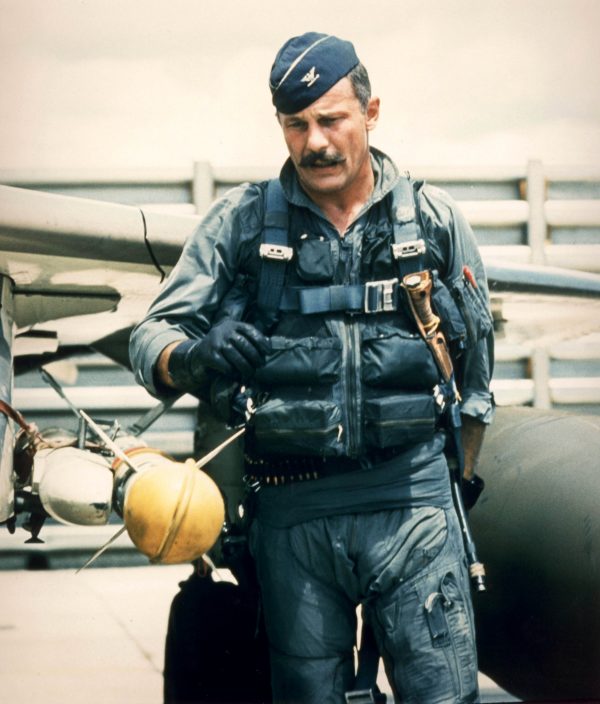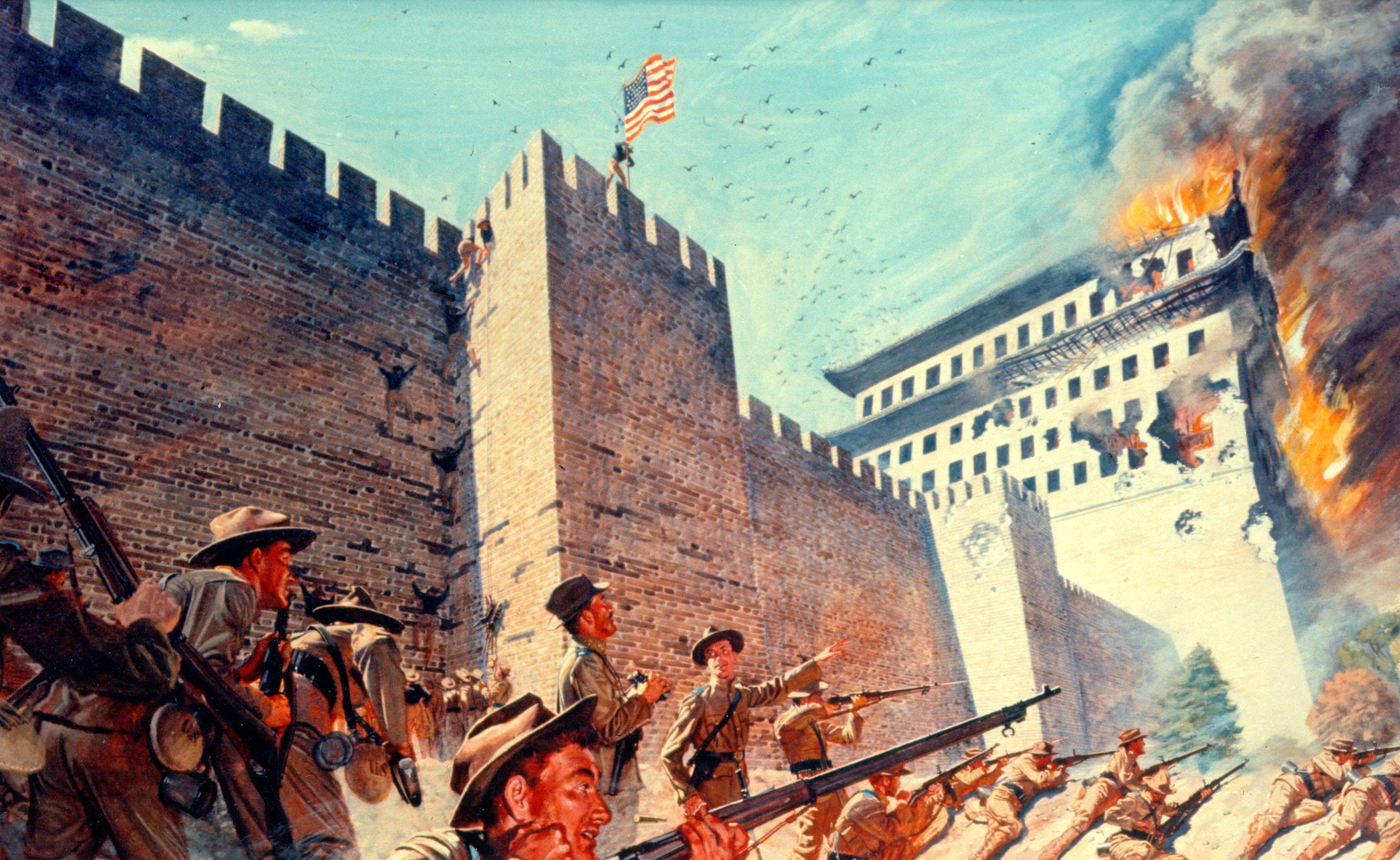August 14 in U.S. military history
1900: After fighting their way 80 miles from the port of Tientsin, an eight-nation relief force (the United States, Japan, Russia, United Kingdom, Austria-Hungary, Germany, France, and Italy) arrives at the walls of Peking. A young Marine private named Dan Daly earns his first of two Medals of Honor during the battle by single-handedly holding off hundreds of Chinese soldiers. Meanwhile, U.S. Army Cpl. Calvin P. Titus (depicted above, holding flag) earns the Medal of Honor for volunteering to scale the city wall surrounding Peking. The troops break the siege, effectively bringing an end to the Boxer Rebellion.
In our nation’s history, only two Marines earned the Medal of Honor for two separate actions — Dan Daly and Smedley Butler, both of whom fought at Peking. 18-year-old captain (having just received a brevet promotion for valor at Tientsin) Butler was wounded in this day’s action, and would say that Daly was “The fightin’est Marine I ever knew.”
1942: While ferrying P-38 Lightning fighters from Maine to England, Maj. John W. Weltman and 2nd Lt. Elza E. Shahan spot a German long-range reconnaissance plane gathering weather data and spotting convoys for the U-boats below. The pilots shoot down the Fw-200 Condor (sharing the credit), marking the first Army Air Force victory of World War II.
1944: Capt. Robin Olds, flying a Lockheed P-38J Lightning named “Scat 1,” blasts two Fw 190 fighters out of the sky on his first combat mission. Olds will shoot down three Me 109s on his second mission nine days later, becoming an ace. Just two years ago he was a star lineman at the U.S. Military Academy, dubbed 1942’s “Player of the Year” by famed sports columnist Grantland Rice. Olds finishes the war with 13 aerial victories.

1945: The night before the United States accepts the surrender of Japan, 754 B-29s and 169 fighters take off from the Marinanas Islands for the last bombing raid of the war, targeting the towns of Kumagaya, Isesaki, and the Akita-Aradi oil refinery.
